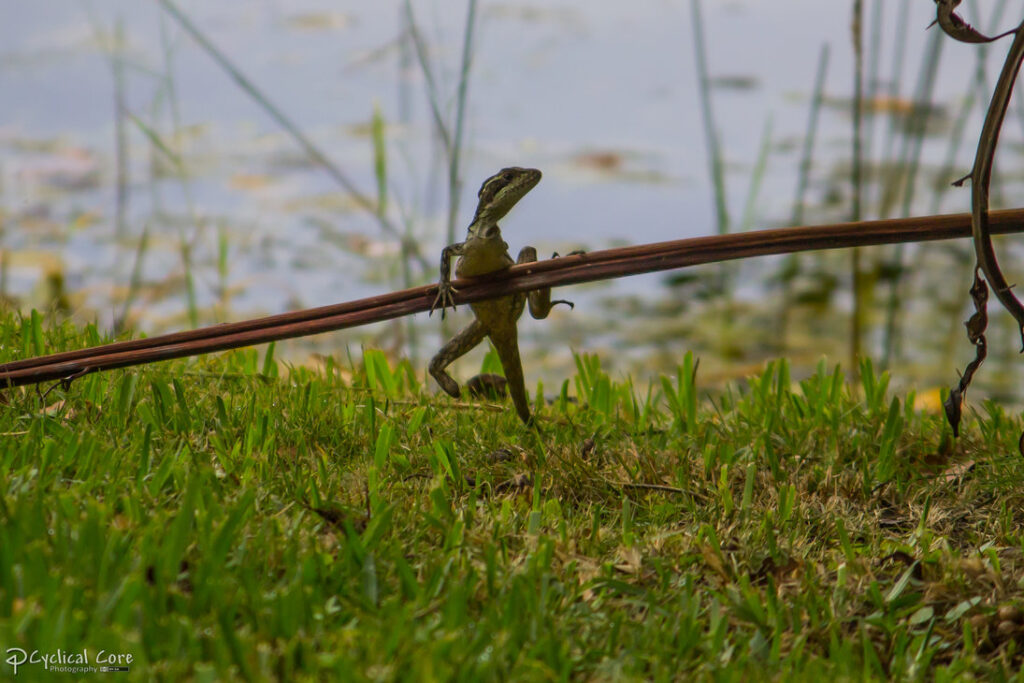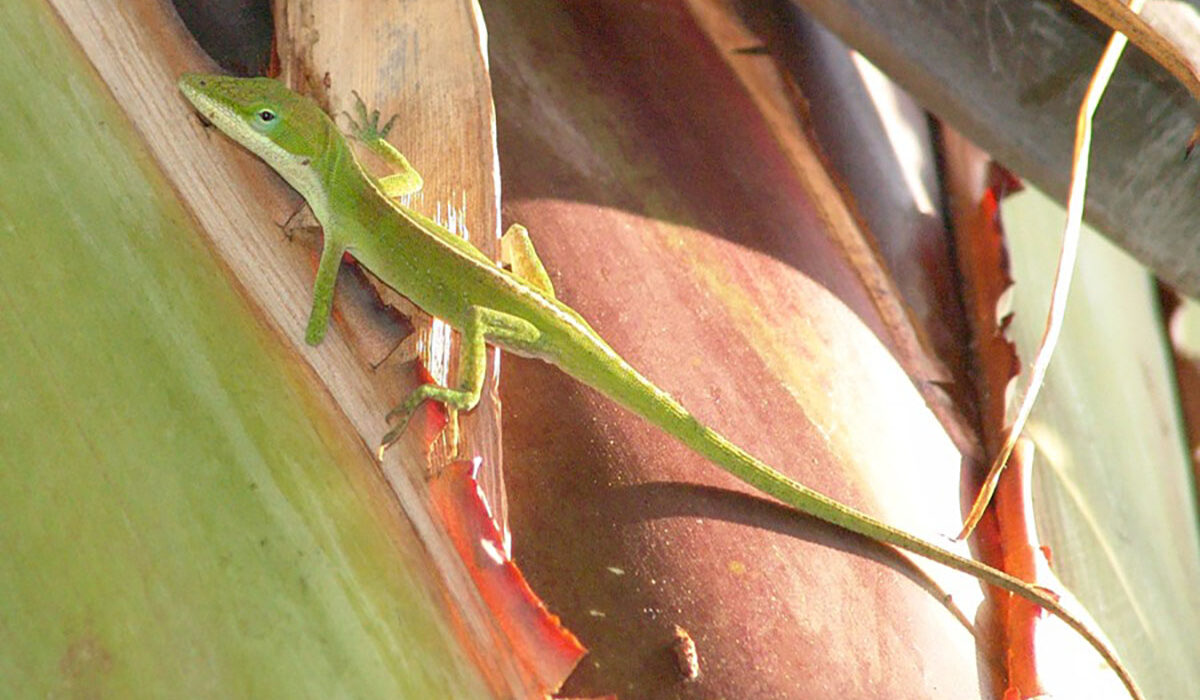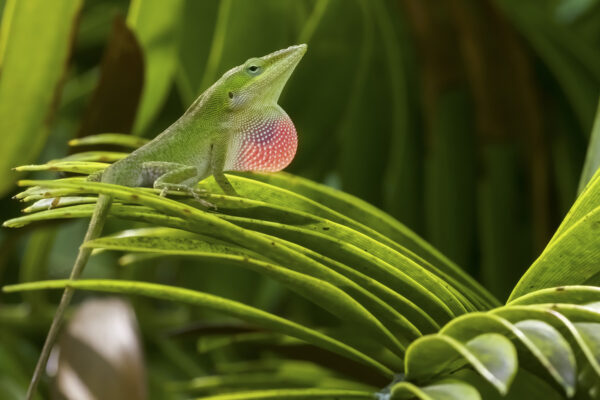More than 20 years ago, Jonathan Losos was in the Bahamas pursuing one of his favorite pastimes — catching and measuring anole lizards — when he spotted a familiar reptilian flash on a branch. But this wasn’t a typical lizard.
“The lizard was nimble,” said Losos, the William H. Danforth Distinguished University Professor in Arts & Sciences at Washington University in St. Louis. “Until I had her in my hand, I didn’t realize she was missing an entire hind leg.”
That surprising find reminded Losos of a passage from Charles Darwin’s “On the Origin of Species,” in which Darwin wrote, “natural selection is daily and hourly scrutinizing … every variation, even the slightest; rejecting that which is bad, preserving what is good.” But missing an entire leg is more than a slight variation, Losos thought, and natural selection clearly hadn’t scrutinized it.
Over the years, Losos kept wondering if the Bahamian lizard was a fluke. “I started talking to colleagues and collecting anecdotes of other encounters with lizards that were missing all or part of a limb,” Losos said.
When lizard expert James Stroud joined Losos’ lab as a postdoctoral researcher in 2018, those conversations evolved into a concerted attempt to collect and synthesize the available data. The effort culminated in a new paper published in The American Naturalist. Stroud, now at the Georgia Institute of Technology, is the lead author, Losos is the senior author, and another 50 co-authors provided observations and other data.
Anyone who has ever seen a three-legged dog enjoying a walk around the neighborhood knows that animals have a way of getting by. But there’s a big difference between a three-legged animal on a leash and an animal trying to survive in the wild.
As biologists interested in evolutionary adaptations, both Losos and Stroud have spent years documenting the significance of subtle differences in anole limb lengths. By conducting studies on a lizard-sized racetrack, Losos had shown that even tiny differences in leg length affected how fast a lizard could run — crucial for catching prey and avoiding predators.
Stroud’s postdoctoral research showed that limb length had crucial real-world consequences. “By measuring lizards and following them for more than two years, we demonstrated that even tiny differences in limb length could be crucial to survival,” Stroud said.
Losos and Stroud’s research would suggest that lizards missing part or all of a limb should be very rare. Indeed, population studies reported in their paper show that less than 1% of lizards captured in the wild have a limb deficit, likely because of an encounter with a predator or a territorial dispute with another lizard. (While many species of lizard can regrow lost tails, amputated legs are gone forever.)
Losos emphasized that losing a limb is probably catastrophic for most lizards. An unknown number starve or succumb to predators quickly after their mishap. “We might only be finding the lucky ones who survive long enough to be sampled,” he said.
Still, three-legged lizards are widespread. After checking with other lizard experts, the team was able to document 122 cases of wild lizards across 58 species missing all or part of a limb. Nearly half of the lizards were Caribbean anoles, but other cases came from around the world. To be included in the study, the injuries had to be healed, indicating that the lizard had survived the injury for some time.
The lizards in the sample were about equally likely to have sustained injury to a forelimb or a hind limb. This was surprising, Stroud noted, because hind limbs provide the power in lizard locomotion. “One might have thought surviving hind limb loss would be less likely,” he said.
When spotted in the wild, three-legged lizards often seem as plump and agile as the anole Losos saw in the Bahamas. “You can tell just by looking at them,” Losos said. “They’re fat and sassy, and clearly aren’t starving.” So how do they survive when one of their limbs goes missing?
Over the years, a few researchers have put three-legged lizards on racetracks to check their ability to run. While some were much slower than typical lizards, others ran as fast, or even faster, than expected for their species. Stroud used slow-motion video and computer analysis to track the running style of a surprisingly fast anole that had lost more than half of its right hind limb. That lizard ran by undulating its trunk from side to side more than typical lizards, extending the length of each stride and giving it extra propulsion.
The success of three-legged lizards doesn’t undermine the evolutionary significance of limb length, Losos said. “We know from many population studies that limb length is a key adaptation for overall survival,” he said.
Nonetheless, Losos and Stroud took one major lesson from these observations: Natural selection isn’t as omnipresent as Darwin speculated. Sometimes selection is strong, and lizards missing limbs don’t stand a chance. But some lizards might just have the good luck to avoid predators. Or food may be so abundant — or predators so scarce — that even an ungainly lizard can get by. “It’s also possible that lizards that are otherwise Olympian in their capabilities can survive such a loss while mere mortals succumb to the effects,” Losos said.
“You can’t help but be impressed by lizards that do well even when they lose a good chunk of a limb,” Losos said. “They’re remarkably resilient.”

Stroud J et. al. Pirates of the Caribbean (and elsewhere): Three-legged Lizards and the Study of Evolutionary Adaptation. The American Naturalist. Available online Oct. 13. DOI: https://doi.org/10.1086/737525
Originally published on the Ampersand website



